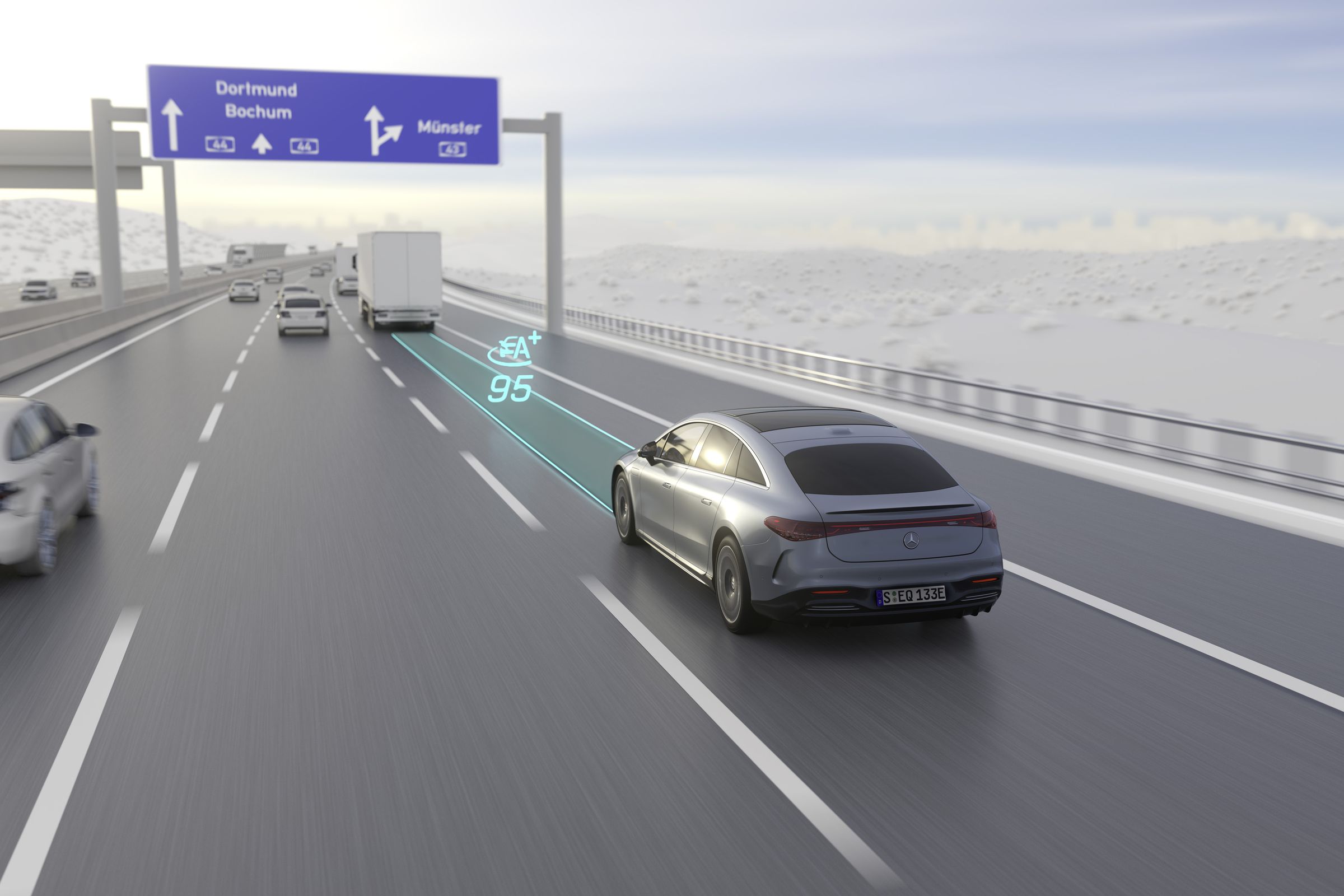Drive Pilot, Mercedes-Benz’s Level 3 “conditionally automated driving” feature, is getting a speed bump. The system will now support speeds of up to 95km/h (59mph) on German motorways, a sign that the automaker is feeling bullish about its boundary-pushing technology.
Mercedes is still waiting for approval from German regulators before pushing out a software update to customers of vehicles that support Drive Pilot. But once that happens, the company boasts that it will have “the world’s fastest Level 3 system in a series-production vehicle.”
Drive Pilot is similar to “hands-free” highway driving systems like GM’s Super Cruise, Ford’s BlueCruise, and Tesla’s Autopilot, in so far as it allows drivers to take their hands off the steering wheel and feet off the pedals under certain conditions. It is currently approved for use in only two states in the US: California and Nevada. But unlike Level 2 systems, in which drivers are required to keep their eyes on the road, Mercedes’ Level 3 system has a little more allowances.
That includes letting drivers look away from the road at something else, like a game or a movie, when certain conditions are met. For Drive Pilot to work, there needs to be a vehicle in front of your car, reasonable road conditions with readable markings and lines, and clear weather and optimal light. If one or more of these conditions aren’t met, then Drive Pilot won’t be available for use.
Initially, Mercedes marketed Drive Pilot as the ideal feature for stop-and-go traffic. Let the car handle the driving so you can check your phone or zone out. And the system will give you ample warning when you need to take back control of the vehicle.
But by dialing up the maximum speed, Mercedes now seems interested in selling Drive Pilot as the ideal partially autonomous system for roadtrips in general. And the company envisions the system as a stepping stone to fully autonomous driving.
But drivers are adept at skirting the rules that govern driver assist systems, according a recent study conducted by the Insurance Institute for Highway Safety. And while Mercedes says drivers won’t be able to fall asleep or climb into the backseat while using Drive Pilot, some will certainly try their hardest. And when the car is traveling at much higher speeds than before, all it takes is a split second for something to go wrong.
There have been studies that show that hand-off between automated system and human driver can be especially fraught. When people are disconnected from driving for a long period of time, they may overreact when suddenly taking control in an emergency situation. They may overcorrect steering, brake too hard, or be unable to respond correctly because they hadn’t been paying attention. And those actions can create a domino effect that has the potential to be dangerous — perhaps even fatal.
Most fully autonomous companies, like Waymo and Cruise, have said they think Level 3 is too dangerous, preferring to work exclusively on Level 4 technology that cuts the driver completely out of the equation. The reason is the need for drivers to stay attentive despite the vehicle performing most of the driving tasks.
Mercedes is in the process of getting approval for turquoise marking lights that show up the headlights, taillights, and side mirrors, so other drivers know the Level 3 system is in use. And the company says the top speed allowed for “conditionally automated driving” in Germany is 130km/h (80.7mph), which it aims to reach by the end of the decade.






